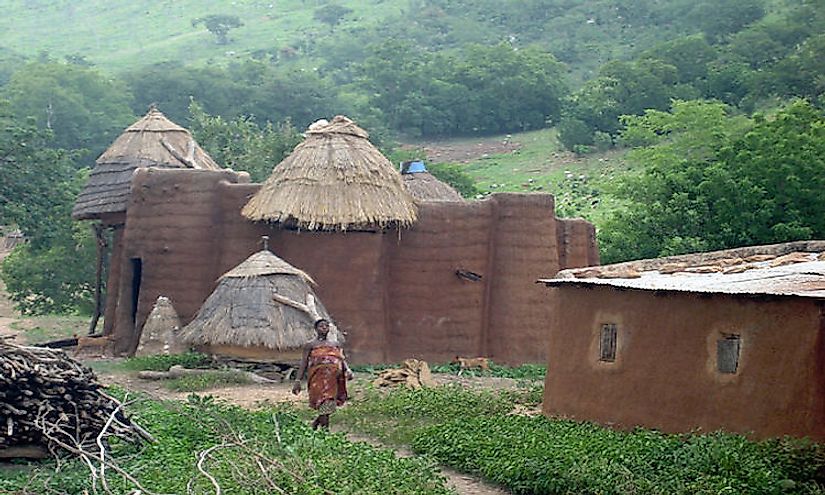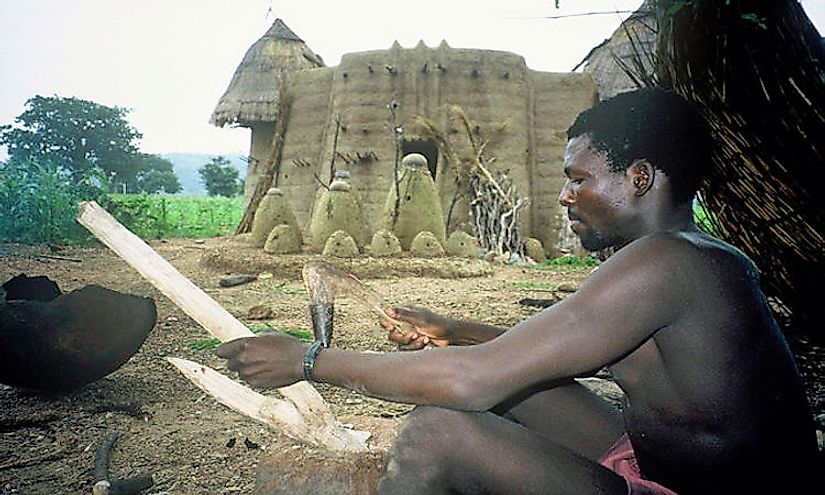Koutammakou, Togo - Batammariba People And Takienta Mudhouses

Togo is located in West Africa. It is bordered by Ghana to the west and Benin to the east, Burkina Faso to the north and the Gulf of Guinea to the south. Its capital City is Lome. It has a population of about 7.5 million people and an area of 22008 square miles. Its official language is French. Majority of the people in Togo practice traditional beliefs. She was declared independent in 1960.
5. Description and History
Koutammakou is a traditional African settlement located in the northern Togo near the Togo-Benin border in West Africa. The settlement covers an area of 500km; it is predominantly occupied by the Batammariba community who practice agriculture. Reaching the settlement is quite adventurous as you will need to use the dusty and rough road in the north-eastern from Kande or cross from Benin near Boukombe. The Batammariba are known for their architecture in the construction of mud towers called Takyentas that remain the preferred style in the area with some houses having two floors and even flat tops. Traditional healing and useful plants, dance, music, archery, oral traditions, mapping sacred areas and its terrain. The area was declared a UNESCO World Heritage Site in 2004 for its outstanding cultural practices. Despite the dynamism in the 21st-century communities, the Batammariba has remained unmoved.
4. Tourism
Since the big announcement by UNESCO, Koutammakou has been a destination for tourist from Europe and North America. It is also a destination for ethnology scholars collecting information on the diverse culture of the Batammariba people. The most attractive feature that draws people to this remote area is the construction of the Takyentas, the mud towers where the families dwell. These houses have naturally conditioned internal environment always maintaining a conducive warm. The Batammariba people are also known for their dances and traditional songs, and their peaceful living with surrounding nature, Social setups in clans, initiation ceremonies, and the religious beliefs. Though the number of tourist entering to Koutammakou is not exact due to improper documentation lead by the tourist using different entry points to the settlements.Thousands of tourist visit this area annually and if managed can generate millions of dollars.
3. Uniqueness
The Koutammakou is a tourist attraction site of its kind. First, the blend of the natural environment and farmland is one not seen anywhere else, there is a high association between people and landscape in the hilly land, nature is firmly associated with the rituals and beliefs of society, often marked by its farmland and forest. Another factor that makes the settlement unique are the houses, Takyentas. Most of them are two Storey some with flat earthen tops while others have cone-shaped grass thatch roofs. The interior is amazing; it has multiple levels of space mostly articulated by a combination of pole and beam flooring supported by earthen joining walls. Earthen steps or ladders are used to get to the upper floor. The cone in the top is made of materials which serve as shrines dedicated to deities, ancestors and wild game.
2. Natural Surroundings, Sights, and Sounds

The area is hilly with a savanna type vegetation, dominated by indigenous trees such as acacia and short thorny shrubs. People share houses with animals; it won’t be funny in Koutammakou to share a house with a cow and pigs at night. The best sights are the Takyentas, from the construction to its completion, and how the house is spaced, it is incredible how it accommodates its inhabitants at dark fall. The making of traditional medicine from the local herbs is another process that draws a lot of interest. A visit to Koutammakou is not complete if one doesn’t does not come across the melodic songs of the women singing, a teacher somewhere giving Ditammari lecture or even pigs fighting for food.
1. Threats and Conservation Efforts
With all this, some issues pose a threat to this prestigious cultural site; the Takyentas may soon be extinct due to the slow encroachment of iron-sheet roofed houses; they may also lose the touch with the ancestors, and traditional believes once civilization moves in. The people believe that land is meant for everyone, and their friendly nature makes it comfortable for anyone to live with them, this poses a threat in that a large influx of foreigners will compromise the culture and fade off their believes as they intermarry and copy from their neighbors. With all that, there are efforts to save the Koutammakou heritage, in January 2002, an expert from Grenoble National School of Architecture traveled to determine the outstanding value of the settlement, its state of management and protection measures. It was listed as a heritage site by UNESCO in 2004











